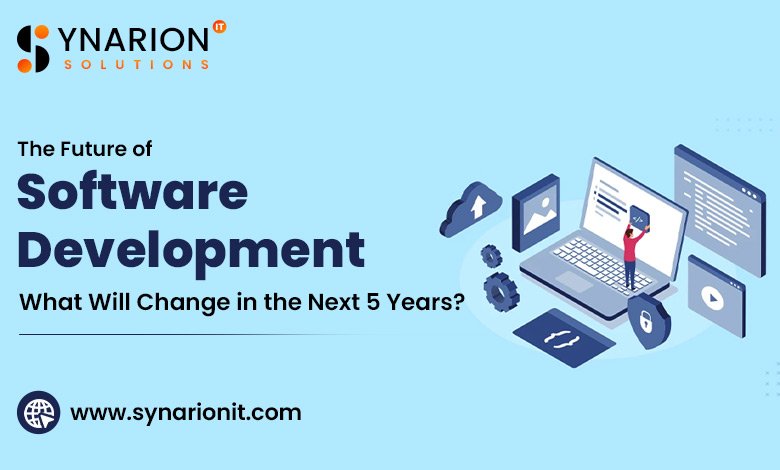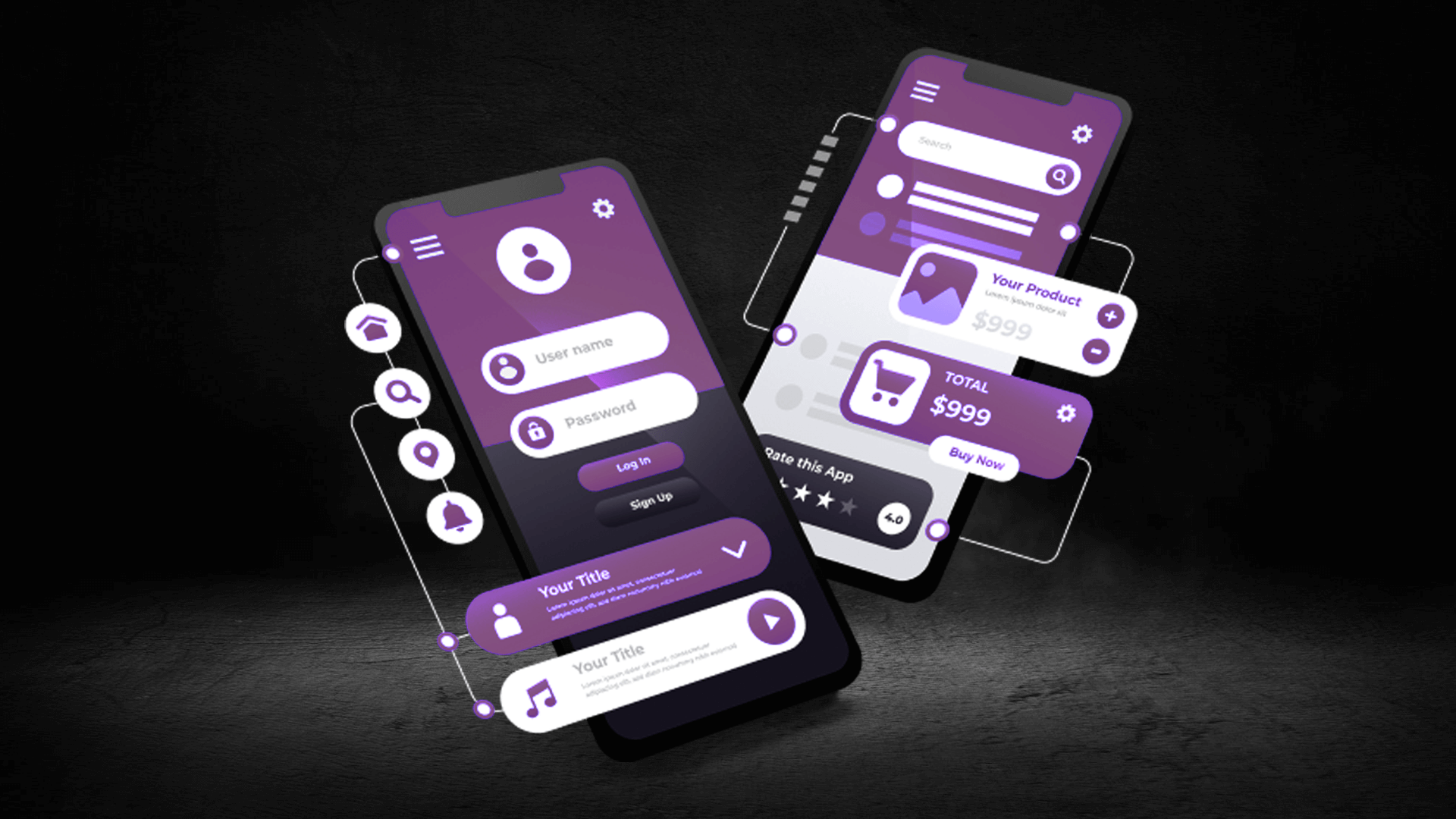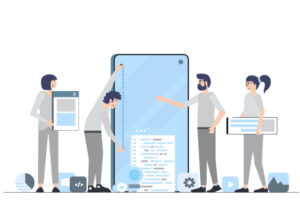The Future of Software Development: What Will Change in the Next 5 Years?
Introduction
Software development is experiencing rapid advancements due to emerging technologies and evolving business needs. As we look ahead to the next five years, several key trends will shape the industry, transforming how software is created, tested, deployed, and maintained. For software development companies, staying ahead of these trends will be crucial to maintain competitiveness, innovation, and relevance.
Increased Adoption of Artificial Intelligence and Machine Learning
One of the most significant changes in software development will be the deeper integration of Artificial Intelligence (AI) and Machine Learning (ML) into the development process itself. AI tools will automate routine tasks like code generation, bug detection, and optimization, freeing up developers to focus on higher-level problem-solving.
AI-Powered Code Generation
Tools like GitHub Copilot are just the beginning. In the next five years, AI will play a more prominent role in automatically writing and suggesting code, reducing the time developers spend on boilerplate code and enabling them to work more efficiently.
Smart Testing and Debugging
Machine learning algorithms will assist in identifying bugs and vulnerabilities earlier in the development cycle. Automated testing powered by AI will help software development companies to improve code quality while reducing manual testing efforts.
Shift to Low-Code and No-Code Development
The demand for faster software deployment and the increasing shortage of skilled developers is driving the growth of low-code and no-code platforms. These platforms enable non-developers (or “citizen developers”) to create applications without deep programming knowledge.
Low-Code/No-Code Revolution
Over the next five years, these platforms will become even more sophisticated, enabling organizations to build complex applications with minimal coding. Software development companies will increasingly rely on these tools to speed up the development lifecycle, especially for simpler, repetitive tasks and internal applications.
Democratization of Development
The barriers to software creation will continue to lower, allowing a broader range of people to participate in the development process, which could lead to a more diverse and innovative software ecosystem.
Cloud-Native and Microservices Architecture
Cloud computing has already revolutionized software deployment, but the next five years will see cloud-native development and microservices architectures becoming even more dominant.
Cloud-Native Technologies
The use of containerization, Kubernetes, and serverless computing will continue to grow, enabling developers to build scalable and highly resilient applications that can easily adapt to changes in demand.
Microservices Over Monolithic Systems
Software development companies will increasingly adopt microservices architectures, which allow them to build more flexible, scalable, and maintainable applications. This shift helps companies break down complex software systems into smaller, independent services that can be updated and deployed independently.
The Rise of DevOps and Continuous Integration/Continuous Deployment (CI/CD)
The integration of development and operations (DevOps) will continue to evolve, bringing faster software delivery and more reliable releases.
DevOps as a Standard Practice
In five years, DevOps practices will be standard for most software development companies, leading to a more seamless collaboration between developers and IT operations. This will significantly reduce time-to-market for new features and fixes.
CI/CD Automation
Continuous integration and continuous deployment pipelines will become more automated, allowing for faster, more frequent releases with fewer errors. Automation tools will help software teams monitor performance and make quick adjustments as needed.
Edge Computing and IoT Integration
With the proliferation of Internet of Things (IoT) devices, the need for edge computing — processing data closer to the source — will increase.
Decentralized Processing
As IoT devices generate massive amounts of data, edge computing will allow for real-time processing, reducing latency and bandwidth usage. Software development companies will need to design systems that can operate efficiently at the edge, in addition to cloud-based systems.
IoT-Ready Software
Companies will need to develop software that seamlessly integrates with a wide array of IoT devices, demanding new approaches to data security, connectivity, and interoperability.
Security and Privacy at the Forefront
With the increasing volume of cyber threats and stringent data privacy regulations, security will be a top priority for software development companies in the coming years.
Shift-Left Security
Security will no longer be an afterthought. Software developers will embrace a “shift-left” mentality, integrating security measures earlier in the development lifecycle, from design to coding to testing.
Zero Trust Architecture
Companies will adopt Zero Trust models for their applications, where no one is trusted by default, whether inside or outside the network. This shift will require developers to build stronger authentication and authorization systems.
Quantum Computing (Long-Term Potential)
While quantum computing is still in its early stages, the next five years may see increased research and early-stage practical applications. This could reshape certain areas of software development, particularly in areas like cryptography, complex problem-solving, and data analysis.
Quantum-Resistant Algorithms
As quantum computers become more powerful, there will be a need for new cryptographic algorithms to protect data. Software development companies will need to invest in developing or integrating quantum-resistant algorithms into their products.
Collaboration and Remote Development Tools
The global shift toward remote work will continue influencing how software development teams collaborate.
Distributed Development Teams
Software development company will adapt to a more decentralized model, relying heavily on cloud-based collaboration tools, version control systems, and real-time communication platforms to manage teams spread across different locations.
Virtual and Augmented Reality Tools
In the coming years, more teams may embrace AR/VR collaboration tools for better visual feedback and interaction, especially for tasks like code review, design, and prototyping.
Sustainability and Green Software Development
As environmental concerns rise, sustainability will become a more prominent focus in software development.
Energy-Efficient Software
Developers will increasingly design software with sustainability in mind, optimizing for energy efficiency, especially in cloud computing and data storage, where vast amounts of energy are consumed.
Green Coding
Software development companies will adopt practices that reduce the carbon footprint of their applications, from optimizing code for better performance to ensuring that cloud providers are using renewable energy sources.
Conclusion
In the next five years, the landscape of software development will be transformed by AI, cloud computing, automation, and emerging technologies like quantum computing and edge computing. Software development company will be essential for creating more efficient, secure, and scalable applications. Embracing new tools and methodologies will help companies not only streamline their development processes but also meet the ever-growing demands of the digital age. The future of software development promises to be more automated, collaborative, and flexible, with a strong focus on security, sustainability, and innovation.














Post Comment